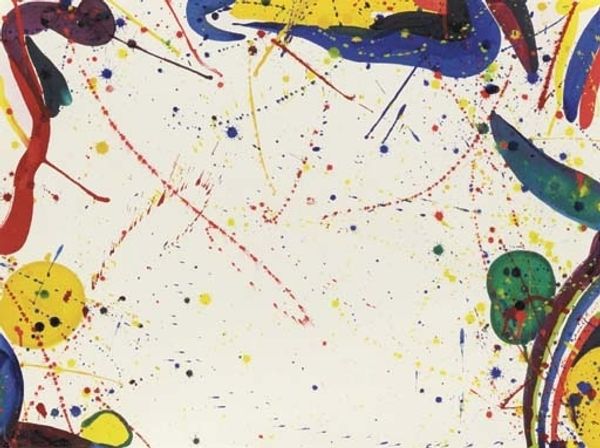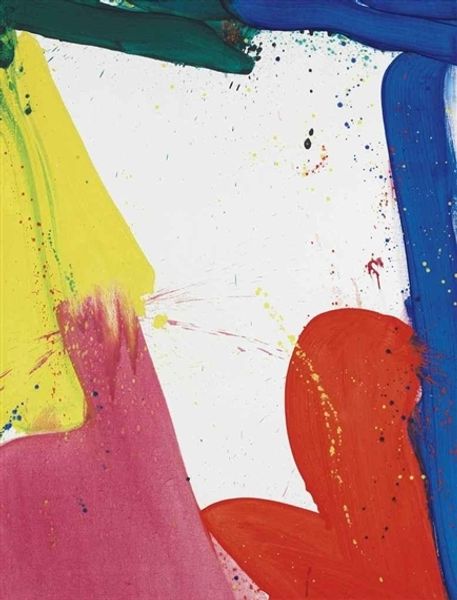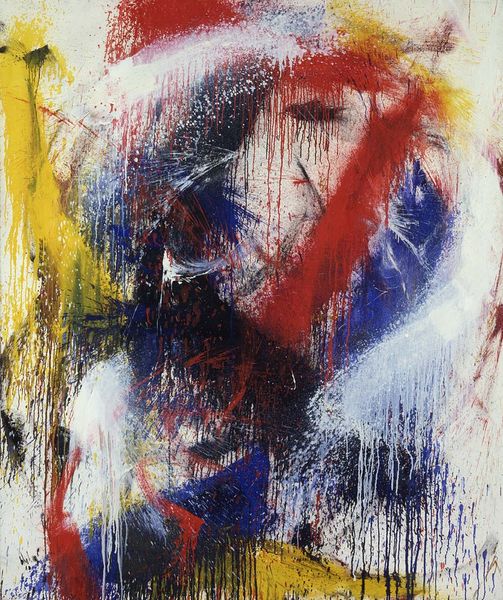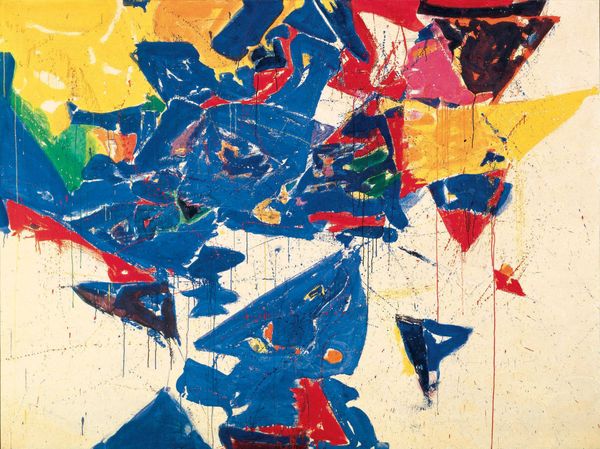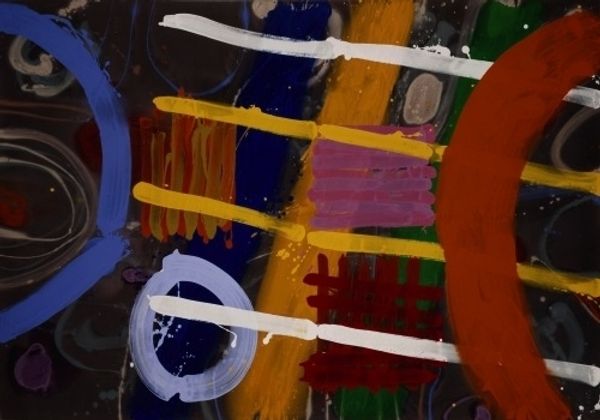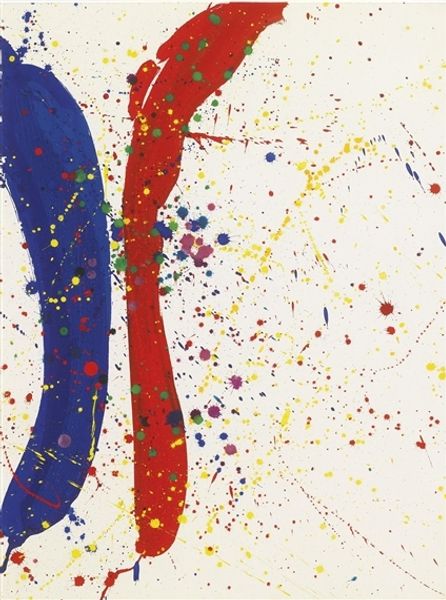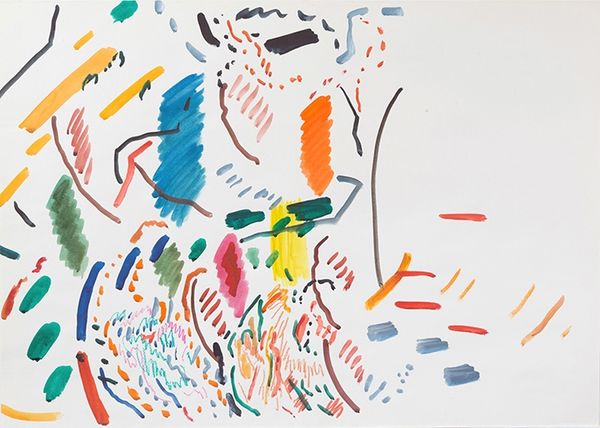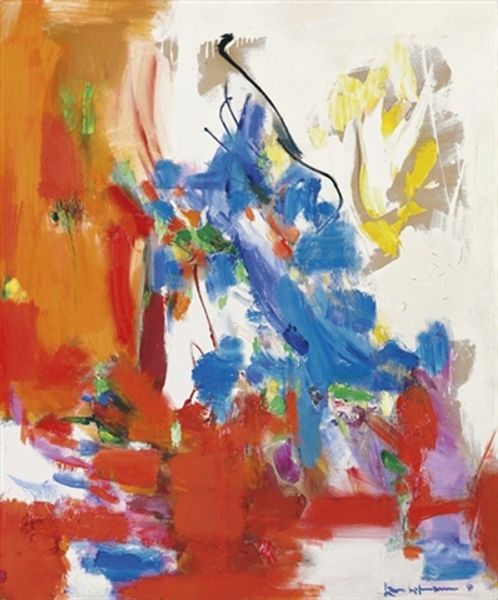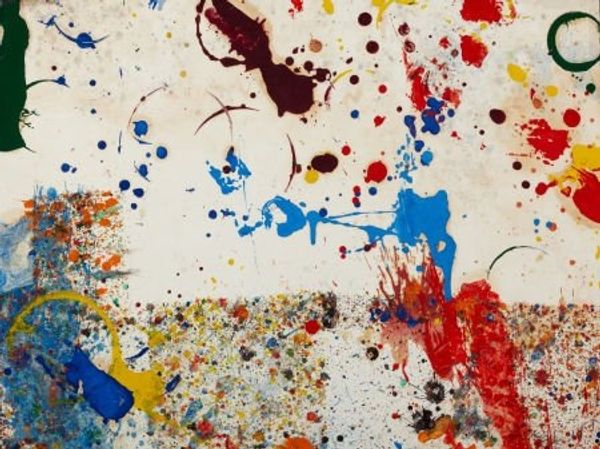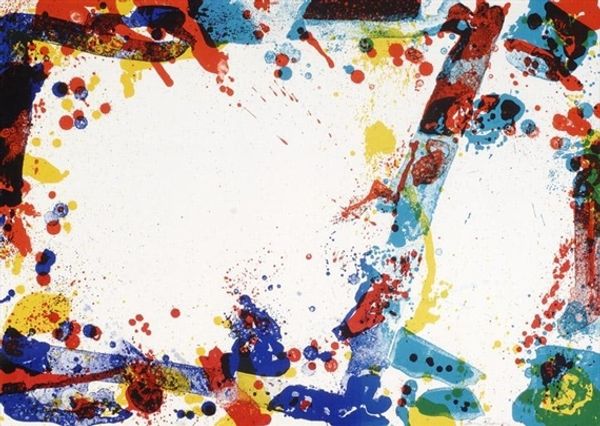
acrylic-paint
#
abstract-expressionism
#
abstract expressionism
#
acrylic-paint
#
form
#
acrylic on canvas
#
abstraction
#
line
#
modernism
Copyright: 2012 Sam Francis Foundation, California / Artists Rights Society (ARS), NY
Curator: Sam Francis’ “When White,” created in 1964, presents a compelling example of Abstract Expressionism executed with acrylic paint. Editor: Immediately, the dynamism strikes me—the contrast of the vibrant primary colors against that expansive white space. It feels both chaotic and meticulously considered. Curator: Absolutely. Francis's work is deeply embedded in the postwar artistic discourse. We have to consider the social upheaval occurring, reflected in the art's rejection of traditional form, favoring spontaneity and subjective expression. "When White," in particular, can be read as a commentary on the perceived purity and emptiness of modernity, perhaps a critique of idealized western paradigms. Editor: Interesting. From my point of view, this piece is clearly about the act of painting. The fluidity of the acrylic, the splatters, and the gestural marks reveal Francis’ engagement with materiality. We're witnessing a celebration of the properties of the paint itself. This medium allowed the artist new control in laying down broad and expressive marks that weren’t feasible with older traditional painting processes. Curator: I see what you mean. This freedom certainly mirrors broader shifts in artistic production at the time. Though Francis did not seem interested in the politics of art and identity that informed work from the same period by some of his Abstract Expressionist peers. Editor: I'd argue that the sheer scale hints at mass production, doesn’t it? This piece encourages the debate about how art can function, can it even be 'authentic,' if reproducible? It begs questions of originality versus consumerism in contemporary culture, which is really brought into focus via its materiality and medium, as you say. Curator: It's important to recognize Francis' position within the art world and broader cultural currents during this pivotal era. This artwork embodies both the aesthetics and social complexities inherent to that period, sparking dialogue around form, context, and individual and collective experiences. Editor: And on a material level, it speaks to the developing technological possibilities of post-war artistic practices and all the potential ramifications within society. Curator: I appreciate your insights into how artistic processes interact with contemporary social issues. Editor: Likewise; your socio-historical context adds new, rich dimensions to my understanding of artistic materials.
Comments
No comments
Be the first to comment and join the conversation on the ultimate creative platform.
